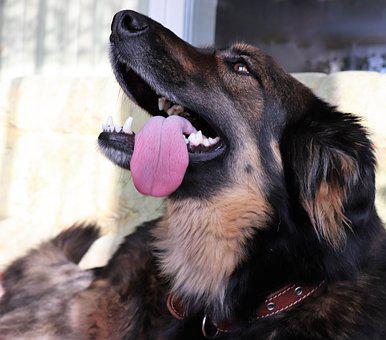
Top 5 ways to learn dogs’ body language, dogs have a unique non-verbal way to communicate with us, as they express their feelings and fears using their different body parts, and perhaps the most prominent of these organs are its ears, eyes, mouth, tail and body position, which together become the dog’s body language to communicate and to identify the best 5 Ways to know the body language of dogs Follow with us this article.
https://bybnews.com/top-5-ways-to-learn-dogs-body-language/
Top 5 ways to learn dogs’ body language
Table of Contents
To read the dog’s body language, you must understand all the signs separately, once you understand the important signs, you can easily understand and read the dog’s body language, let’s start with the famous and clear body language trait.
1- Shake the tail:
Everyone knows that dogs tend to wag their tails a lot, however, wagging the tail always expresses that the dog is excited, but excitement is not the only meaning of tail wag, as it can often mean that the dog is emotionally agitated, as can It also means the dog is frustrated.
To determine the exact meaning of wagging tail, you should note the speed and direction of the tail, as follows:
- A fast moving tail can indicate that the dog is feeling emotions strongly
- A slow side-to-side rocking can also mean feeling calm and welcoming, more appropriately meaning your dog is relaxed.
- While a fast-moving tail can also mean a dog is alert.
- The direction of the tail when shaking also has a meaning and intention behind it, when it moves to the right, it can be a positive attitude, while the left can be a negative indicator.
2- Eye movement:
Just like humans, eyes can be a mirror of what goes on in a dog’s mind. Your dog’s eyes on you and the look on their faces can tell a lot about their feelings. Dogs make ‘soft eyes’ or a relaxed face when they are happy and satisfied around their skin.
If he looks at you with a sharp look or keeps staring at you for a long time, this indicates that the dog is angry or wants to be in control.
Dilated pupils can also indicate that the dog is feeling very frightened, and this also happens if the dog is stressed, but when the dog is relaxed and comfortable, its eyes often look like almonds.
3- Oral language:
When a dog is relaxed or relaxed, it happens to keep its mouth open and panting, and at the same time, a frightened dog will close its mouth or even pant heavily, so it is important to read facial expressions with oral language so that you understand well and correctly.
Whereas when dogs are feeling relaxed and happy, they find that they are smiling at you with a clear smile that is hard to ignore.
4- The language of the ears:
Dogs’ ears always respond actively to their feelings and play a vital role in a dog’s body language, but all dogs are different and so are their ears, coming in all different shapes and sizes, and some dogs also communicate with ears better than any other part of the body.
A dog’s relaxed and naturally relaxed ears are always positioned as they should be, while an alarmed or alert dog’s ears are erect all the time, erect ears also indicate that the dog has aroused his interest and indicates an object of interest, the same thing happens when a dog feels angry and shows aggression from By directing the erect ears towards the object of his interest.
Dogs’ ears will drop or flatten over their heads when they are anxious or stressed, and some dogs will also move their ears back and forth to express different emotions.
5- Posture and movement of the body:
Dogs are never stable, you find them always awake in any situation, even while resting or sleeping, moving their ears and eyes at the slightest sound around them, and a dog’s body position and movement can tell us a lot about what he is about to do next.
For example, a dog makes its body appear smaller than when it is afraid of something, and when the dog’s body bends and touches the ground, this can be a sign of stress or submission.
While a dog lying upside down with their stomach exposed indicates that they are reassuring you and trust you and are not feeling any aggression, you should also know that rolling on their back does not always mean that they want to play or need a belly rub, it can also be a sign of stress and anxiety.
Signs of love and attachment to a favorite dog person are head nodding, kneeling play, hugging, lip licking, rolling on their back, and more.